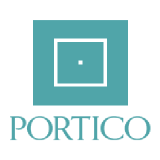REFERENCES
1. Abenavoli L, Procopio AC, Paravati MR, et al. Mediterranean diet: the beneficial effects of lycopene in non-alcoholic fatty liver disease. J Clin Med 2022;11:3477.
3. Abenavoli L, Giubilei L, Procopio AC, et al. Gut microbiota in non-alcoholic fatty liver disease patients with inflammatory bowel diseases: a complex interplay. Nutrients 2022;14:5323.
4. Chalasani N, Younossi Z, Lavine JE, et al. American Gastroenterological Association; American Association for the Study of Liver Diseases; American College of Gastroenterologyh. The diagnosis and management of non-alcoholic fatty liver disease: practice guideline by the American gastroenterological association, American association for the study of liver diseases, and American college of gastroenterology. Gastroenterology 2012;142:1592-609.
5. Angulo P, Kleiner DE, Dam-Larsen S, et al. Liver fibrosis, but no other histologic features, is associated with long-term outcomes of patients with nonalcoholic fatty liver disease. Gastroenterology 2015;149:389-97.e10.
6. Buzzetti E, Pinzani M, Tsochatzis EA. The multiple-hit pathogenesis of non-alcoholic fatty liver disease (NAFLD). Metabolism 2016;65:1038-48.
7. Abenavoli L, Maurizi V, Rinninella E, et al. Fecal microbiota transplantation in NAFLD treatment. Medicina 2022;58:1559.
8. Lackner C. Prospects for a better diagnosis and prognosis of NAFLD: a pathologist´s view. Hepatoma Res 2021;7:27.
9. Ricote M, Glass CK. PPARs and molecular mechanisms of transrepression. Biochim Biophys Acta 2007;1771:926-35.
10. Raza S, Rajak S, Upadhyay A, Tewari A, Anthony Sinha R. Current treatment paradigms and emerging therapies for NAFLD/NASH. Front Biosci 2021;26:206-37.
11. Davis C, Bryan J, Hodgson J, Murphy K. Definition of the Mediterranean diet; a literature review. Nutrients 2015;7:9139-53.
12. Keys A, Menotti A, Aravanis C, et al. The seven countries study: 2,289 deaths in 15 years. Prev Med 1984;13:141-54.
13. Sberna AL, Bouillet B, Rouland A, et al. European association for the study of the Liver (EASL), European Association for the study of diabetes (EASD) and European Association for the Study of Obesity (EASO) clinical practice recommendations for the management of non-alcoholic fatty liver disease: evaluation of their application in people with Type 2 diabetes. Diabet Med 2018;35:368-75.
14. Guasch-Ferré M, Willett WC. The Mediterranean diet and health: a comprehensive overview. J Intern Med 2021;290:549-66.
15. Urquiaga I, Guasch V, Marshall G, et al. Effect of mediterranean and occidental diets, and red wine, on plasma fatty acids in humans. an intervention study. Biol Res 2004;37:253-61.
16. Hoffman R, Gerber M. Evaluating and adapting the mediterranean diet for non-Mediterranean populations: a critical appraisal. Nutr Rev 2013;71:573-84.
18. Vervandier-Fasseur D, Latruffe N. The potential use of resveratrol for cancer prevention. Molecules 2019;24:4506.
19. Farchi G, Fidanza F, Mariotti S, Menotti A. Alcohol and mortality in the Italian rural cohorts of the Seven Countries Study. Int J Epidemiol 1992;21:74-81.
20. Farchi G, Fidanza F, Giampaoli S, Mariotti S, Menotti A. Alcohol and survival in the Italian rural cohorts of the seven countries study. Int J Epidemiol 2000;29:667-71.
21. WHO Expert Committee on Problems Related to Alcohol Consumption: Second Report. No. 944. Available from: https://iris.who.int/bitstream/handle/10665/43670/9789241209441_eng.pdf?sequence=1 4 [Last accessed on 6 Mar 2024]
22. Zelber-Sagi S, Salomone F, Mlynarsky L. The Mediterranean dietary pattern as the diet of choice for non-alcoholic fatty liver disease: evidence and plausible mechanisms. Liver Int 2017;37:936-49.
23. Dominguez LJ, Di Bella G, Veronese N, Barbagallo M. Impact of mediterranean diet on chronic non-communicable diseases and longevity. Nutrients 2021;13:2028.
24. UNESCO. Mediterranean Diet. Available from: https://ich.unesco.org/en/RL/mediterranean-diet-00884 [Last accessed on 29 Feb 2024].
26. Ahamad J, Toufeeq I, Khan MA, et al. Oleuropein: A natural antioxidant molecule in the treatment of metabolic syndrome. Phytother Res 2019;33:3112-28.
27. Park S, Choi Y, Um SJ, Yoon SK, Park T. Oleuropein attenuates hepatic steatosis induced by high-fat diet in mice. J Hepatol 2011;54:984-93.
28. Kim SW, Hur W, Li TZ, et al. Oleuropein prevents the progression of steatohepatitis to hepatic fibrosis induced by a high-fat diet in mice. Exp Mol Med 2014;46:e92.
29. Gabbia D, Carpi S, Sarcognato S, et al. The extra virgin olive oil polyphenol oleocanthal exerts antifibrotic effects in the liver. Front Nutr 2021;8:715183.
30. Marrelli M, Russo C, Statti G, et al. Phytochemical and biological characterization of dry outer scales extract from Tropea red onion (Allium cepa L. var. Tropea)-A promising inhibitor of pancreatic lipase. Phytomedicine Plus 2022;2:100235.
31. Tedesco I, Carbone V, Spagnuolo C, Minasi P, Russo GL. Identification and quantification of flavonoids from two southern italian cultivars of allium cepa L., Tropea (Red Onion) and Montoro (Copper Onion), and their capacity to protect human erythrocytes from oxidative stress. J Agric Food Chem 2015;63:5229-38.
32. Gennaro L, Leonardi C, Esposito F, et al. Flavonoid and carbohydrate contents in Tropea red onions: effects of homelike peeling and storage. J Agric Food Chem 2002;50:1904-10.
33. Miltonprabu S, Tomczyk M, Skalicka-Woźniak K, et al. Hepatoprotective effect of quercetin: From chemistry to medicine. Food Chem Toxicol 2017;108:365-74.
34. Marcolin E, San-Miguel B, Vallejo D, et al. Quercetin treatment ameliorates inflammation and fibrosis in mice with nonalcoholic steatohepatitis. J Nutr 2012;142:1821-8.
35. Ying HZ, Liu YH, Yu B, Wang ZY, Zang JN, Yu CH. Dietary quercetin ameliorates nonalcoholic steatohepatitis induced by a high-fat diet in gerbils. Food Chem Toxicol 2013;52:53-60.
36. Mohan SK, Jainu M. Effect of pioglitazone, quercetin and hydroxy citric acid on inflammatory markers in experimentally induced non alcoholic steatohepatitis (NASH). IJPER 2015;49:152-7.
37. Shi Z, Zhang C, Lei H, et al. Structural insights into amelioration effects of quercetin and its glycoside derivatives on NAFLD in mice by modulating the gut microbiota and host metabolism. J Agric Food Chem 2022;70:14732-43.
38. Juárez-Fernández M, Porras D, Petrov P, et al. The synbiotic combination of akkermansia muciniphila and quercetin ameliorates early obesity and NAFLD through gut microbiota reshaping and bile acid metabolism modulation. Antioxidants 2021;10:2001.
39. Prato E, Biandolino F. Total lipid content and fatty acid composition of commercially important fish species from the Mediterranean, Mar Grande Sea. Food Chemistry 2012;131:1233-9.
40. Sargent JR, Tocher DR, Bell JG. The lipids. In: Halver JE, Hardy, RW, editors. Fish nutrition (Third Edition). Academic Press; 2003. pp. 181-257
41. Özogul Y, Özogul F. Fatty acid profiles of commercially important fish species from the Mediterranean, Aegean and Black Seas. Food Chemistry 2007;100:1634-8.
42. Antraco VJ, Hirata BKS, de Jesus Simão J, et al. Omega-3 polyunsaturated fatty acids prevent nonalcoholic steatohepatitis (NASH) and stimulate adipogenesis. Nutrients 2021;13:622.
43. Li YH, Yang LH, Sha KH, Liu TG, Zhang LG, Liu XX. Efficacy of poly-unsaturated fatty acid therapy on patients with nonalcoholic steatohepatitis. World J Gastroenterol 2015;21:7008-13.
44. Nogueira MA, Oliveira CP, Ferreira Alves VA, et al. Omega-3 polyunsaturated fatty acids in treating non-alcoholic steatohepatitis: A randomized, double-blind, placebo-controlled trial. Clin Nutr 2016;35:578-86.
45. Navarra M, Mannucci C, Delbò M, Calapai G. Citrus bergamia essential oil: from basic research to clinical application. Front Pharmacol 2015;6:36.
46. Palacio TLN, Siqueira JS, de Paula BH, et al. Bergamot (Citrus bergamia) leaf extract improves metabolic, antioxidant and anti-inflammatory activity in skeletal muscles in a metabolic syndrome experimental model. Int J Food Sci Nutr 2023;74:64-71.
47. Da Pozzo E, De Leo M, Faraone I, et al. Antioxidant and antisenescence effects of bergamot juice. Oxid Med Cell Longev 2018;2018:9395804.
48. Adorisio S, Muscari I, Fierabracci A, et al. Biological effects of bergamot and its potential therapeutic use as an anti-inflammatory, antioxidant, and anticancer agent. Pharm Biol 2023;61:639-46.
49. Baron G, Altomare A, Mol M, et al. Analytical profile and antioxidant and anti-inflammatory activities of the enriched polyphenol fractions isolated from bergamot fruit and leave. Antioxidants 2021;10:141.
50. Lombardo GE, Cirmi S, Musumeci L, et al. Mechanisms underlying the anti-inflammatory activity of bergamot essential oil and its antinociceptive effects. Plants 2020;9:704.
51. Bhia M, Motallebi M, Abadi B, et al. Naringenin nano-delivery systems and their therapeutic applications. Pharmaceutics 2021;13:291.
52. Picerno P, Sansone F, Mencherini T, et al. Citrus bergamia juice: phytochemical and technological studies. Natural Product Communications 2011;6:1934578X1100600.
53. Parafati M, Lascala A, La Russa D, et al. Bergamot polyphenols boost therapeutic effects of the diet on non-alcoholic steatohepatitis (NASH) induced by "junk food": evidence for anti-inflammatory activity. Nutrients 2018;10:1604.
54. Musolino V, Gliozzi M, Scarano F, et al. Bergamot polyphenols improve dyslipidemia and pathophysiological features in a mouse model of non-alcoholic fatty liver disease. Sci Rep 2020;10:2565.
55. Musolino V, Macrì R, Cardamone A, et al. Salvia rosmarinus spenn. (Lamiaceae) hydroalcoholic extract: phytochemical analysis, antioxidant activity and in vitro evaluation of fatty acid accumulation. Plants 2023;12:3306.
56. Wang SJ, Chen Q, Liu MY, et al. Regulation effects of rosemary (Rosmarinus officinalis Linn.) on hepatic lipid metabolism in OA induced NAFLD rats. Food Funct 2019;10:7356-65.
57. Allegra A, Tonacci A, Pioggia G, Musolino C, Gangemi S. Anticancer activity of rosmarinus officinalis l.: mechanisms of action and therapeutic potentials. Nutrients 2020;12:1739.
58. Gîrd CE, Costea T, Mitran V. Evaluation of cytotoxic activity and anticancer potential of indigenous rosemary (Rosmarinus officinalis L.) and oregano (Origanum vulgare L.) dry extracts on MG-63 bone osteosarcoma human cell line. Rom J Morphol Embryol 2021;62:525-35.
59. Colica C, Di Renzo L, Aiello V, De Lorenzo A, Abenavoli L. Rosmarinic acid as potential anti-inflammatory agent. Rev Recent Clin Trials 2018;13:240-2.
60. Moore J, Yousef M, Tsiani E. Anticancer effects of rosemary (Rosmarinus officinalis L.) extract and rosemary extract polyphenols. Nutrients 2016;8:731.
62. Moslehi A, Komeili-movahed T. The effects of rosmarinic acid on the liver fibrosis induced by non-alcoholic steatohepatitis in male mice Available from: https://www.researchgate.net/publication/354140121_The_Effects_of_Rosmarinic_Acid_on_the_Liver_Fibrosis_Induced_by_Non-alcoholic_Steatohepatitis_in_Male_Mice [Last accessed on 8 Mar 2024].
63. Komeili-Movahhed T, Bassirian M, Changizi Z, Moslehi A. SIRT1/NFκB pathway mediates anti-inflammatory and anti-apoptotic effects of rosmarinic acid on in a mouse model of nonalcoholic steatohepatitis (NASH). J Recept Signal Transduct Res 2022;42:241-50.
64. Bonfiglio C, Cuccaro F, Campanella A, et al. Effect of intake of extra virgin olive oil on mortality in a south italian cohort with and without NAFLD. Nutrients 2023;15:4593.







